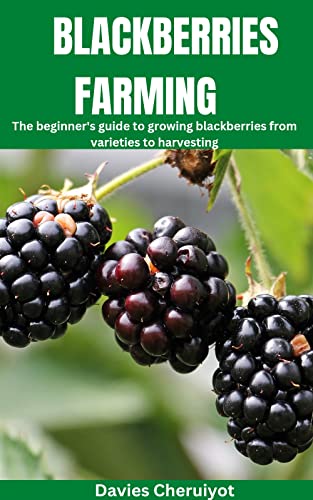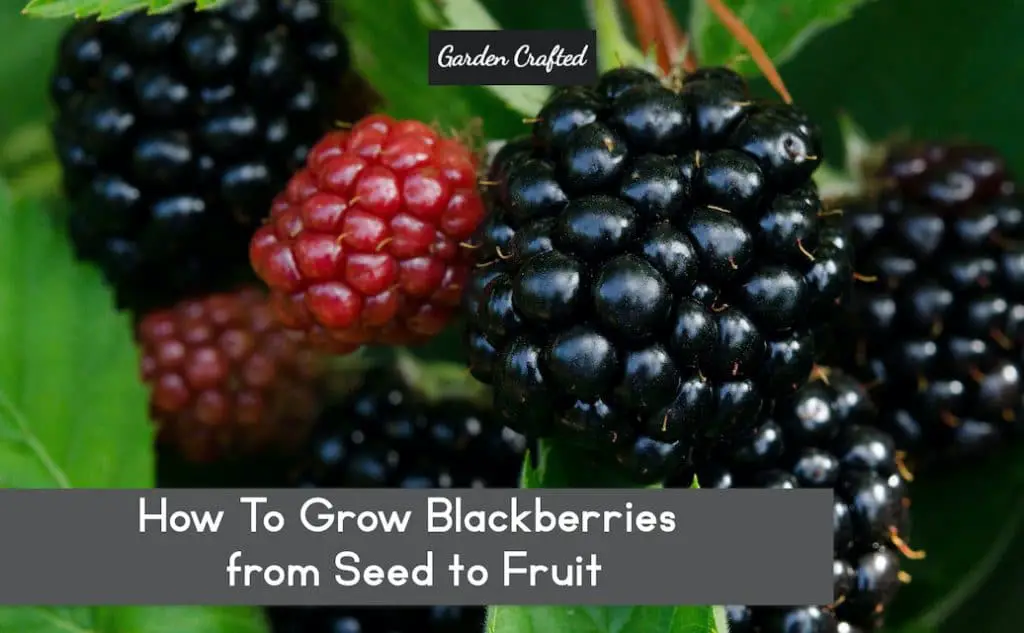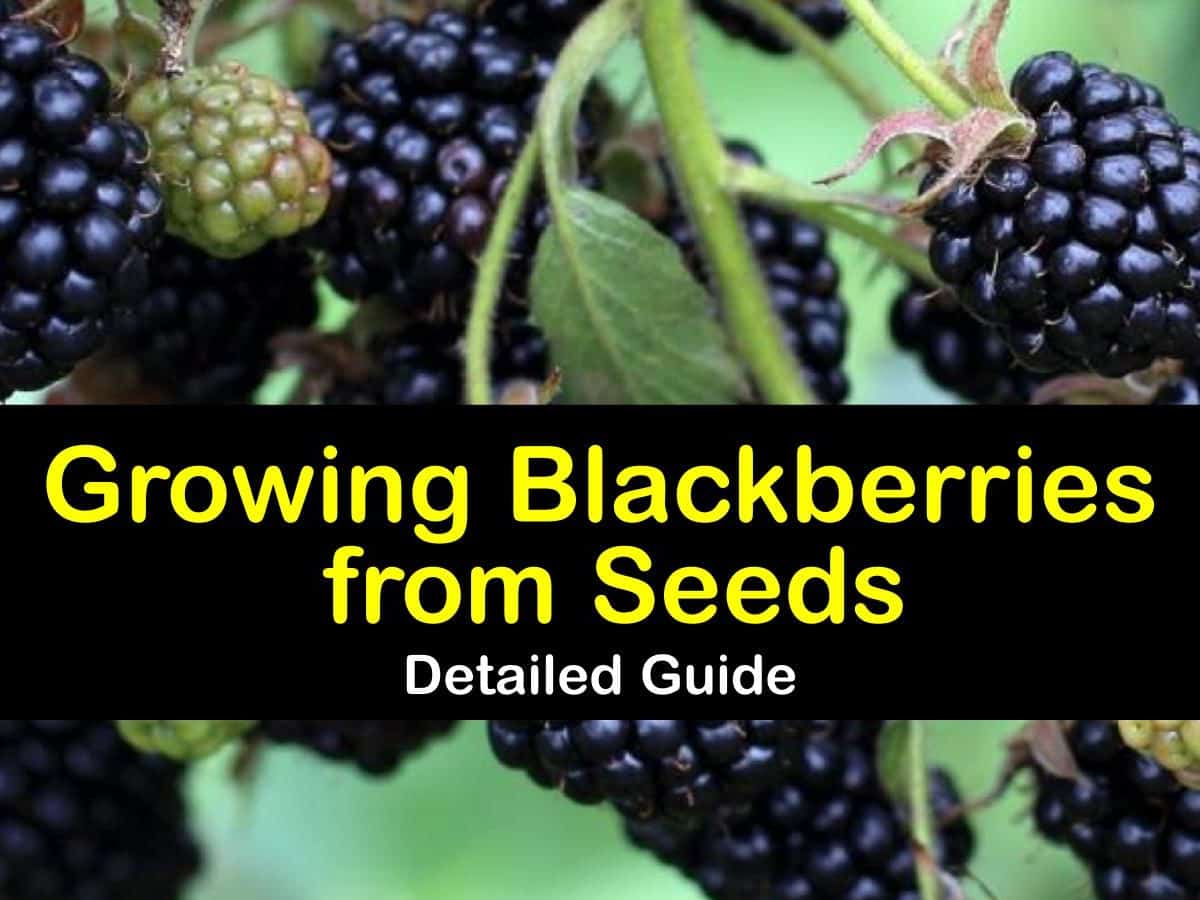So you’re eager to start growing your own blackberries from seed but not quite sure how to go about it? Look no further! In this beginner’s guide, we’ll walk you through the simple steps to successfully grow blackberries from seed, allowing you to enjoy these delicious fruits right in your own backyard. From selecting the right seeds to nurturing your plants as they grow, we’ve got you covered. Get ready to embark on a journey that will not only provide you with tasty, homegrown blackberries but also fill your garden with vibrant beauty. Let’s get started!

Selecting Blackberry Seeds
When it comes to growing blackberries from seed, the first step is selecting the right seeds. Varieties of blackberries differ in terms of taste, growth habit, disease resistance, and hardiness. Determine the specific characteristics you desire and research the varieties that best meet your preferences. Look for reputable seed suppliers or consider saving seeds from a blackberry plant that has the qualities you admire.
Choosing the Right Variety
The choice of variety is crucial when it comes to growing blackberries from seed. Some popular varieties to consider are Apache, Triple Crown, Navaho, and Thornless Evergreen. Each variety has its own unique characteristics that may suit your preferences. For example, if you live in a colder climate, you might opt for a variety that is more cold-hardy. Research the characteristics of different varieties, including their fruiting season and growth habit, to make an informed decision.

Obtaining Quality Seeds
Once you have decided on the variety, it is important to obtain high-quality blackberry seeds. Look for seeds that are fresh and have been properly stored to ensure their viability. If purchasing seeds, choose a reputable supplier that specializes in blackberry seeds. Alternatively, you can save seeds from a mature blackberry plant that exhibits the qualities you desire. It is best to collect seeds from fully ripe, healthy berries.
Preparing the Seeds
Seed Stratification
Blackberry seeds typically require a process called stratification to improve their germination rate. This involves subjecting the seeds to a period of cold and moist conditions, similar to what they would experience during winter. To stratify blackberry seeds, place them in a refrigerator in a moist medium, such as damp peat moss or vermiculite, for 8-12 weeks. This chilling period helps break the seed dormancy and prepares them for germination.
Scarification
Scarification is another method that can enhance the germination of blackberry seeds. This process involves creating small scratches or abrasions on the seed coat to allow moisture to penetrate and promote germination. To scarify the seeds, carefully rub them with a fine sandpaper or use a sharp knife to nick the surface of the seed. Be cautious not to damage the actual embryo within the seed.
Soaking Seeds
Soaking blackberry seeds is a simple and effective way to help break dormancy and speed up germination. Before sowing the seeds, soak them in water for 24-48 hours. This soaking process helps soften the seed coat and encourages the seeds to absorb water, kickstarting the germination process.

Planting Blackberry Seeds
Germination Environment
To successfully germinate blackberry seeds, create an environment that mimics their natural growing conditions. Ideal temperatures for germination range from 68-77 degrees Fahrenheit (20-25 degrees Celsius). Ensure the seeds receive consistent moisture throughout the germination process, but avoid over-watering, as it can lead to fungal diseases.
Soil Requirements
Blackberry plants thrive in well-draining, fertile soil. Prior to planting the seeds, prepare the soil by removing any weeds or debris and amend it with compost or well-rotted manure to improve its fertility. The soil pH should be slightly acidic to neutral, preferably between 5.5 and 7.0, for optimal blackberry growth.
Sowing Seeds
When it comes to sowing blackberry seeds, shallow planting is recommended. Place the seeds on the surface of the soil and lightly cover them with a thin layer of soil or vermiculite. Keep the soil consistently moist until germination occurs. It is essential to provide adequate spacing between the seeds to allow the seedlings to grow without competing for resources.
Spacing and Depth
For optimal growth, space the blackberry seeds at least 3-4 inches apart within rows and provide 18-24 inches between rows. This spacing ensures sufficient air circulation and room for the plants to spread as they mature. When covering the seeds with soil, a depth of approximately 1/4 inch is sufficient. Avoid burying the seeds too deeply, as it can hinder germination.
Caring for Blackberry Seedlings
Watering
Proper watering is crucial for the healthy development of blackberry seedlings. During the initial stages, keep the soil consistently moist, but not waterlogged. As the plants grow, adjust the watering frequency to match the needs of the soil and weather conditions. Deep, infrequent watering is generally recommended to encourage the roots to grow deeper into the soil.
Sunlight Requirements
Blackberry plants thrive in full sun, so choose a location that receives at least 6-8 hours of direct sunlight per day. Adequate sunlight ensures optimal fruit production and overall plant health. If planting the seedlings indoors, place them near a sunny window or provide artificial grow lights to simulate sunlight.
Pruning
Pruning plays a vital role in shaping the growth of blackberry plants and maximizing fruit production. Begin pruning once the seedlings reach a height of 12-18 inches. Remove any weak or damaged canes and leave only the strongest and healthiest ones. As the plants grow, continue to prune annually to remove old, non-productive canes and promote the growth of new canes.
Fertilizing
Blackberry plants benefit from regular fertilization to provide essential nutrients for healthy growth and fruit production. Apply a balanced, slow-release fertilizer in early spring before new growth appears. Follow the manufacturer’s instructions for application rates and timings. Additionally, periodically supplement the plants with organic matter, such as compost or well-rotted manure, to enrich the soil.

Protecting Blackberry Plants
Mulching
Mulching is an essential practice in blackberry cultivation, as it helps retain moisture, suppresses weeds, and maintains a uniform soil temperature. Apply a layer of organic mulch, such as straw or wood chips, around the base of the plants, leaving a gap around the stems to avoid moisture-related diseases. Renew the mulch annually to ensure its effectiveness.
Weed Control
Weeds can compete with blackberry plants for nutrients and water, so it is important to keep the planting area weed-free. Regularly inspect the area and promptly remove any weeds that emerge. Hand-pulling or carefully cultivating around the plants can be effective weed control methods. Be cautious not to damage the shallow roots of the blackberry plants while removing the weeds.
Pest and Disease Management
Blackberry plants can be susceptible to pests like aphids, spider mites, and Japanese beetles. Monitor the plants regularly for any signs of pest infestation and take appropriate measures to control them, such as using insecticidal soap or natural predators. Additionally, be vigilant about common blackberry diseases, such as powdery mildew and cane blight. If necessary, apply appropriate fungicides following the instructions on the product label.
Netting for Birds
Birds can quickly devour the delicious blackberries before you have a chance to harvest them. To protect your crop, cover the plants with bird netting once they start producing fruit. Secure the netting tightly to prevent birds from accessing the berries. Ensure the netting has small enough holes to exclude even the smallest bird species.
Supporting Blackberry Plants
Installing Trellis
Blackberry plants have long, arching canes that can become heavy with fruit. To support the growth and prevent the canes from trailing on the ground, install trellises or support systems. Choose a sturdy trellis system that allows for easy access to the plants and makes harvesting more convenient. As the canes grow, gently tie them to the trellis to keep them upright.
Training Canes
To train the canes along the trellis, gently encourage them to grow in the desired direction. As the canes reach the desired height, top them to encourage lateral branching, which will result in more fruiting laterals. Tying the lateral branches to the trellis will prevent them from sprawling and ensure they receive adequate sunlight and airflow.
Pruning for Support
Regular pruning is necessary to maintain a well-supported blackberry plant. Remove any weak, damaged, or overcrowded canes to allow for better air circulation and reduce the risk of disease. Prune back the remaining canes to the desired height, typically around 4-5 feet. This height is ideal for harvesting and provides manageable support for the canes.

Blackberry Care during Winter
Winter Protection
Blackberry plants are susceptible to cold temperatures, particularly if you live in regions with harsh winters. Protect them by applying a layer of mulch around the base of the plants in late fall. This mulch acts as insulation and helps regulate soil temperature during winter. Additionally, consider covering the plants with burlap or a frost blanket during severe cold snaps.
Pruning for Winter
Pruning blackberry plants in late winter or early spring is essential to remove any dead or damaged wood and promote new growth. Remove old fruiting canes and trim back any lateral branches to encourage strong, productive new canes. Prune the canes to a height of approximately 12-18 inches for optimal growth and fruit production.
Mulching for Cold
Mulching serves dual purposes during winter. Along with insulation, it also protects the plant’s roots from extreme cold. Apply a thick layer of mulch around the base of the plants, extending a few inches beyond the drip line. This layer will help retain soil moisture and protect the roots from freezing temperatures.
Harvesting Blackberries
Determining Ripeness
Blackberries are ready for harvest when they are fully ripe, plump, and juicy. Ripe berries should easily detach from the plant with a gentle tug. Look for berries that have a deep, dark color, usually black or dark purple, depending on the variety. Taste a few berries to determine their sweetness and flavor before harvesting the entire crop.
Gentle Harvesting
When harvesting blackberries, it is crucial to handle them gently to avoid bruising or damaging the fruit. Use your fingers to carefully pluck the ripe berries from the plant, taking care not to disturb the nearby unripe berries. Avoid using excessive force or squeezing the berries too tightly, as this can lead to spoilage.
Handling and Storage
To maintain the quality and freshness of harvested blackberries, handle them with care. Place the berries in shallow containers or baskets, avoiding stacking them too deep. Store the containers in the refrigerator immediately after harvesting to preserve their flavor and extend their shelf life. Consume the blackberries as soon as possible for the best taste and texture.
Common Blackberry Growing Challenges
Fruit Not Ripening
If your blackberries are not ripening as expected, several factors could be at play. Insufficient sunlight, poor pollination, inadequate fertilization, or improper pruning can all contribute to delayed or uneven fruit ripening. Assess these factors and make the necessary adjustments to ensure optimal fruit development. Additionally, ensure the plants receive enough water and are not experiencing any moisture stress.
Drooping Canes
Drooping canes can be a sign of weak or damaged blackberry plants. Weak canes may struggle to support the weight of the fruit, resulting in bending or drooping. Ensure the plants receive adequate support through trellising or other support methods. If a cane is too weak or damaged, consider pruning it back to strengthen the plant and redirect its energy to healthier canes.
Yellowing Leaves
Yellowing leaves in blackberry plants could indicate various issues, such as nutrient deficiencies, overwatering, waterlogged soil, or diseases. Evaluate the growing conditions and address any potential problems accordingly. Adjust watering schedules, improve the soil drainage, and consider fertilizing the plants to correct nutrient deficiencies. If the problem persists, consult a local gardening expert or extension service for further assistance.
Pest Infestation
Blackberry plants are vulnerable to various pests, including aphids, spider mites, and Japanese beetles. Regularly inspect the plants for any signs of pest activity, such as curled leaves, webs, or chewed foliage. Introduce natural predators like ladybugs or use organic pest control methods to manage the infestation. Regularly removing weeds and keeping the planting area clean can also help reduce pest populations.
Conclusion
Growing blackberries from seeds may require some patience and care, but the rewards are worth it. By selecting the right variety, preparing the seeds correctly, and providing the appropriate care and maintenance, you can enjoy a bountiful harvest of delicious blackberries. Remember to continually learn and experiment with different cultivation techniques to further improve your blackberry growing skills. So roll up your sleeves, get ready to dig in the dirt, and enjoy the sweet fruits of your labor. Happy gardening!



